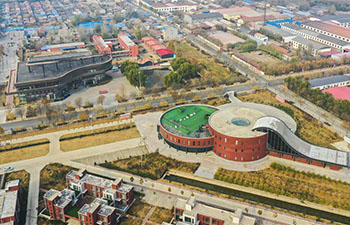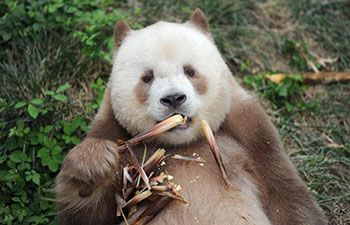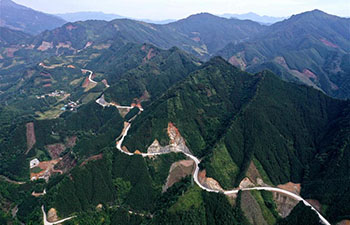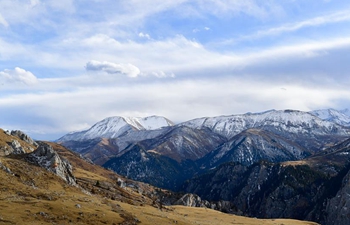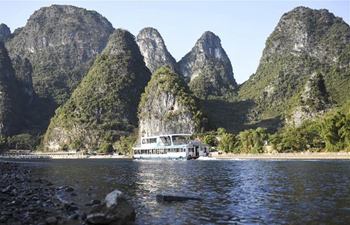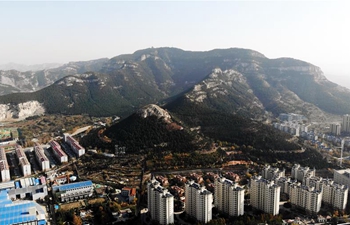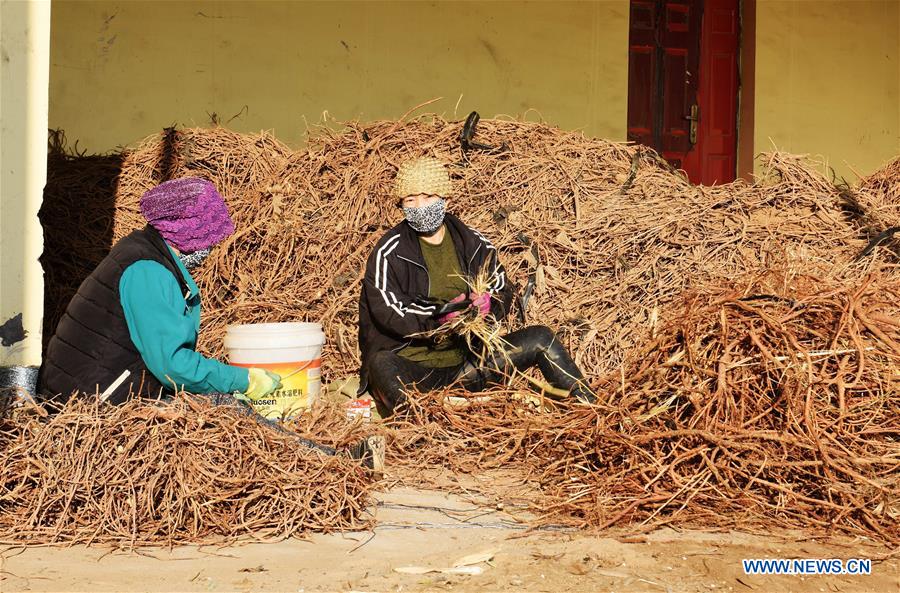
Photo taken on Nov. 21, 2019 shows workers sorting the picked licorice at a plant in the Ulan Buh Desert, north China's Inner Mongolia Autonomous Region. A plant designed to combat desertification has not only helped buffer sand dunes from spreading in the Ulan Buh Desert, the eighth-largest in China, but has also provided a new source of income to local residents. Licorice, commonly known as sweet grass, is a commonly used herb in Chinese medicine prescriptions. With the role of biological nitrogen fixation and sand control, the plant has grown well with plenty of sunshine and the big temperature difference between day and night in the desert region. The licorice grown in the desert region contains higher medicinal levels of glycyrrhizin and glycyrrhizic acid than varieties planted in plain areas. With the market price for licorice set at 6 yuan (0.85 U.S. dollars) per kg. (Xinhua/Li Yunping)










